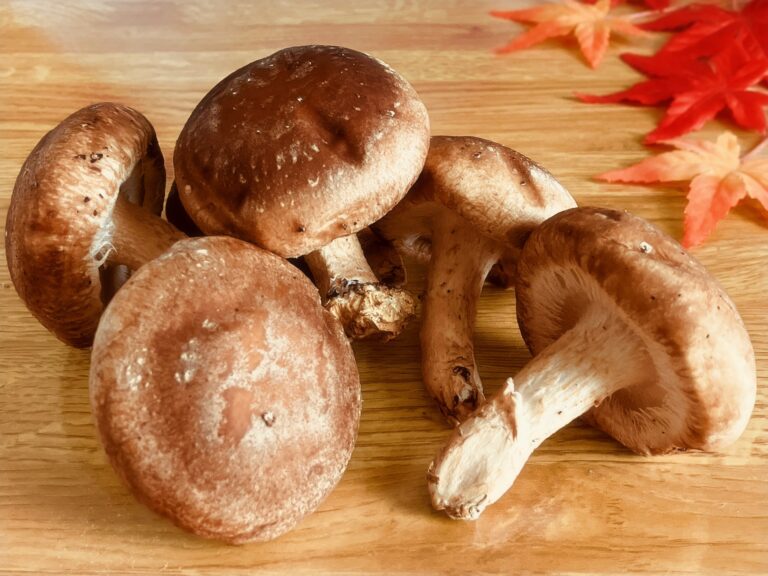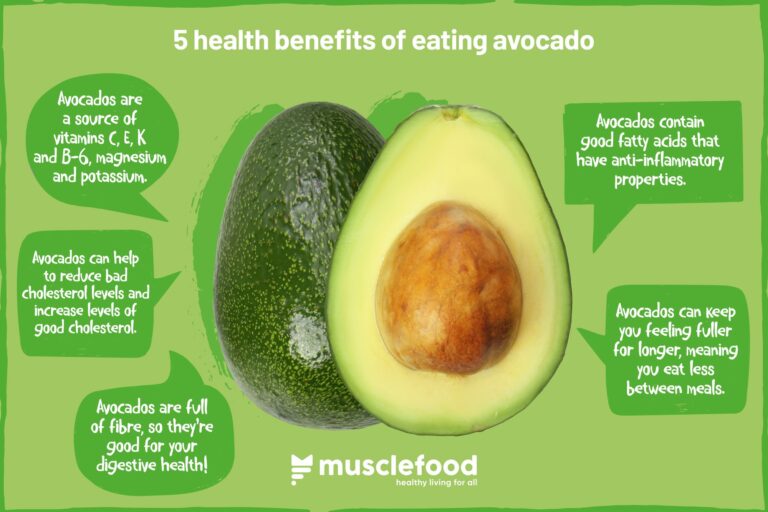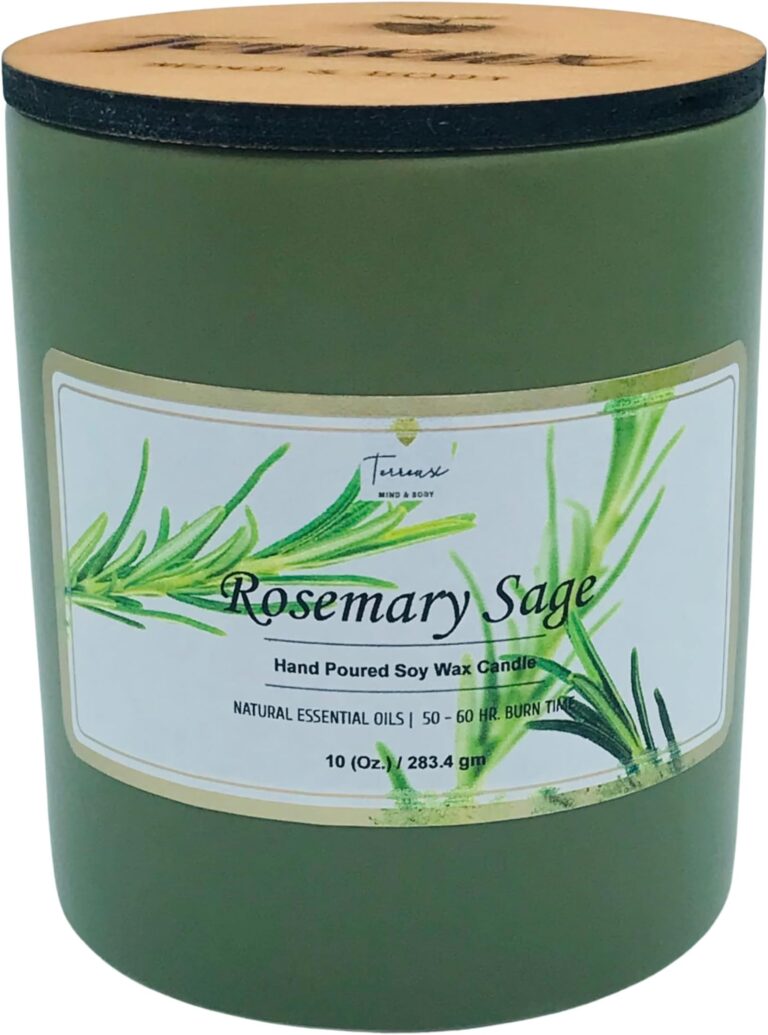The Ultimate Magnesium Cheat Sheet: How to Hit Your Daily Goals Without Supplements
Chapter 1: The Quiet Whisper of Deficiency – An Unseen Epidemic
It began, for me, not with a sudden crash, but with a series of quiet whispers. The persistent twitch in my eyelid, a tremor that arrived uninvited after a long day. The restless nights, where sleep felt like a gossamer veil I could never quite grasp. The unexpected muscle cramps that seized my calves mid-stretch, pulling me back from the serenity of my morning yoga. And the brain fog, a frustrating haze that sometimes made simple tasks feel like navigating a labyrinth.
Like many, I initially dismissed these as the inevitable byproducts of modern life: stress, aging, too much screen time. I reached for quick fixes – more caffeine, over-the-counter pain relievers, even stronger sleep aids. But the whispers persisted, growing louder, hinting at a deeper imbalance. This wasn’t just about managing symptoms; it was about understanding the root cause.
My journey, and perhaps yours too, led me down a familiar path in the wellness world: the supplement aisle. I saw bottles promising solutions for everything from energy to sleep, and magnesium was prominently featured. Magnesium citrate, glycinate, oxide, malate – a bewildering array. For a time, I dutifully took my daily dose, experiencing some relief, enough to believe I was on the right track.
But a nagging question lingered: Why did I need to supplement? Had humans always needed to take pills to feel their best? Or had something fundamental shifted in our relationship with nature, with our food, with our bodies? This curiosity, this desire to reconnect with a more primal, sustainable form of wellness, became the genesis of my deep dive into the world of magnesium – not as a pharmaceutical fix, but as an inherent part of our biological symphony, one we’d largely forgotten how to conduct naturally.
This is not a story about demonizing supplements. For some, they are a necessary bridge to recovery. But this is a story about rediscovering a more profound, holistic path. It’s about learning how to coax this essential mineral back into our lives, not through a pill, but through intentional living, mindful eating, and a renewed respect for the earth’s bounty. It’s about empowering ourselves to become the ultimate architects of our own well-being, proving that hitting your daily magnesium goals is not just possible without supplements, but often, profoundly more enriching.
Chapter 2: The Unsung Hero – Why Magnesium Matters (More Than You Think)
To truly appreciate the power of natural magnesium, we must first understand its colossal role in the human body. Imagine an orchestra. If your body is the orchestra, magnesium is not just a single instrument, but the conductor, the sheet music, and the very air the music travels through. It’s the unsung hero, participating in over 300 enzymatic reactions – that’s a staggering number, impacting virtually every system.
For the knowledgeable audience, let’s get a little deeper than just "good for muscles."
- The Energy Engine (ATP Production): Magnesium is indispensable for the creation of ATP (adenosine triphosphate), the body’s primary energy currency. Without adequate magnesium, your cells literally can’t produce energy efficiently. It acts as a cofactor for ATPase, the enzyme that releases energy from ATP. This isn’t just about feeling tired; it impacts every cellular process requiring energy, from muscle contraction to nerve transmission.
- The Genetic Blueprint (DNA & RNA Synthesis): Magnesium is crucial for the structural integrity and proper functioning of DNA and RNA. It helps stabilize these genetic materials and is involved in their replication and repair. This means it plays a fundamental role in cell division, growth, and overall cellular health.
- The Muscle Maestro (Contraction & Relaxation): While calcium is often highlighted for muscle contraction, magnesium is equally vital for relaxation. It competes with calcium at binding sites, preventing excessive contraction and allowing muscles to release tension. This is why magnesium deficiency so often manifests as muscle cramps, spasms, and restless legs. It’s the mineral that says "chill out."
- The Nerve Nurturer (Neurotransmitter Regulation): Magnesium modulates the activity of various neurotransmitters, including serotonin, a key mood regulator, and GABA, a calming neurotransmitter. It also helps regulate the flow of calcium into nerve cells, which, in excess, can lead to over-excitation and neuronal damage. This explains its profound impact on mood, anxiety, and sleep quality.
- The Heart’s Rhythm Keeper (Cardiovascular Health): Magnesium helps maintain a steady heart rhythm by regulating the movement of calcium and potassium across cell membranes. It also plays a role in blood pressure regulation by relaxing blood vessels and influencing endothelial function.
- The Bone Builder (Structural Integrity): While 60% of the body’s magnesium resides in bones, it’s not just a passive resident. It’s crucial for the activation of Vitamin D, which in turn is essential for calcium absorption. It also directly influences bone crystal formation and density.
- The Insulin Sensitizer (Blood Sugar Control): Magnesium plays a role in glucose metabolism and insulin sensitivity. Low magnesium levels are often correlated with insulin resistance and an increased risk of type 2 diabetes.
The Recommended Daily Allowance (RDA) for magnesium typically hovers around 310-420 mg for adults, depending on age and sex. However, these are often minimums to prevent outright deficiency symptoms, not necessarily optimal levels for peak performance and health. Factors like chronic stress, intense exercise, certain medications, and digestive issues can significantly increase individual magnesium requirements.
The challenge, and the reason for this "cheat sheet," is that modern agriculture has depleted our soils, meaning the food grown today often contains less magnesium than it did decades ago. Coupled with a diet heavy in processed foods, which are notoriously devoid of this vital mineral, it’s no wonder so many of us are falling short. But the good news is, our bodies are remarkably adept at absorbing and utilizing magnesium when presented in its natural, food-bound form. This approach not only provides magnesium but a symphony of other co-factors, vitamins, and minerals that work synergistically, enhancing absorption and overall health in ways a single supplement rarely can.
Chapter 3: The Earth’s Pharmacy – Your Ultimate Food-Based Magnesium Cheat Sheet
Our journey back to optimal magnesium begins where all true nutrition should: the earth. Nature, in its infinite wisdom, has packaged magnesium perfectly within a matrix of other vital nutrients, making it more bioavailable and effective than any isolated pill. Forget the supplement aisle for a moment and open your pantry.
The Green Powerhouses: Leafy Greens
These are the non-negotiables, the foundational pillars of magnesium intake. Think of them as your daily dose of green gold.
- Spinach: A true superstar. A single cup of cooked spinach can provide over 150 mg of magnesium. It’s also packed with iron, vitamin K, and antioxidants.
- How to Enjoy: Wilt it into scrambled eggs, blend it into smoothies (you won’t taste it!), sauté it with garlic as a side dish, or layer it generously in sandwiches and salads.
- Swiss Chard: Close behind spinach in magnesium content, Swiss chard offers a slightly earthier flavor.
- How to Enjoy: Great in stir-fries, quiches, or braised with a touch of olive oil and lemon.
- Kale: While slightly lower in magnesium than spinach, kale is still a fantastic source, offering around 30 mg per cooked cup, alongside a wealth of other nutrients.
- How to Enjoy: Massage it with olive oil and lemon for a tender salad, bake it into crispy chips, or add it to soups and stews.
- Collard Greens & Mustard Greens: These robust greens are excellent sources, particularly when cooked.
- How to Enjoy: Traditionally slow-cooked with savory ingredients, or quickly sautéed for a healthier twist.
Pro-Tip for Greens: Cooking methods matter. Steaming or lightly sautéing helps retain magnesium, whereas boiling can leach some minerals into the water. Don’t discard that nutrient-rich cooking liquid!
The Nut & Seed Nirvana: Tiny Titans of Nutrition
These small but mighty foods are concentrated sources of magnesium, perfect for snacking or adding textural crunch to meals.
- Pumpkin Seeds (Pepitas): The undisputed king of magnesium among seeds, boasting over 150 mg per ¼ cup serving!
- How to Enjoy: Roast them for a snack, sprinkle them over salads, soups, or oatmeal, or blend them into pesto.
- Almonds: A generous ¼ cup provides around 100 mg of magnesium, plus healthy fats, fiber, and vitamin E.
- How to Enjoy: Eat them raw, make almond butter, add to granola, or use in baking.
- Cashews: Offering about 75 mg per ¼ cup, cashews are also a good source of zinc and copper.
- How to Enjoy: Snack on them, use them to make creamy sauces (like vegan cheese sauce), or add to stir-fries.
- Chia Seeds: Around 60 mg per 2 tablespoons, chia seeds are also fiber powerhouses and omega-3 champions.
- How to Enjoy: Create chia puddings, add to smoothies, or use as an egg substitute in baking.
- Flax Seeds: Similar to chia, offering around 40 mg per 2 tablespoons, and excellent for omega-3s and fiber.
- How to Enjoy: Grind them for better absorption and sprinkle on everything from yogurt to salads.
- Brazil Nuts: While famous for selenium, a few Brazil nuts also contribute a decent amount of magnesium.
Pro-Tip for Nuts & Seeds: Soaking nuts and seeds overnight can improve digestibility and nutrient absorption by breaking down phytic acid, which can otherwise bind to minerals like magnesium.
The Legume & Grain Grandeur: Fiber-Rich Foundations
These staples provide a substantial amount of magnesium, particularly when incorporated regularly into your diet.
- Black Beans: A powerhouse, with over 120 mg of magnesium per cooked cup, plus protein and fiber.
- How to Enjoy: In tacos, burritos, salads, soups, or as a base for veggie burgers.
- Lentils: Another legume champion, offering around 70 mg per cooked cup, along with plant-based protein and iron.
- How to Enjoy: In hearty soups, stews, curries, or as a warm salad.
- Chickpeas (Garbanzo Beans): About 70 mg per cooked cup, and incredibly versatile.
- How to Enjoy: Make hummus, roast them for a crunchy snack, add to salads or curries.
- Quinoa: This ancient grain is a complete protein and provides around 120 mg of magnesium per cooked cup.
- How to Enjoy: As a side dish, in salads, or as a breakfast bowl.
- Brown Rice: While not as dense as quinoa, brown rice still offers a respectable amount of magnesium (around 40 mg per cooked cup) compared to refined white rice.
- How to Enjoy: As a base for stir-fries, curries, or alongside any protein.
- Oats: A ½ cup serving of dry oats (about 1 cup cooked) provides around 50 mg of magnesium.
- How to Enjoy: Oatmeal for breakfast, in homemade granola, or as a binder in veggie burgers.
Pro-Tip for Legumes & Grains: Sprouting legumes and grains can further enhance their nutrient profile and bioavailability. Pressure cooking also helps break down anti-nutrients.
The Fruit & Veggie Favorites: Sweet & Savory Sources
Don’t overlook the bounty of fresh produce for contributing to your magnesium goals.
- Avocado: The creamy green fruit is a fantastic source, with around 58 mg per medium avocado, plus healthy fats and potassium.
- How to Enjoy: Guacamole, sliced on toast, in salads, or blended into smoothies.
- Bananas: While more famous for potassium, a medium banana also offers about 32 mg of magnesium.
- How to Enjoy: A quick snack, in smoothies, or sliced over oatmeal.
- Potatoes (with skin): A medium baked potato with its skin can provide around 48 mg of magnesium, plus vitamin C and potassium.
- How to Enjoy: Baked, roasted, or mashed (leave the skin on for maximum nutrients).
- Dark Chocolate (70%+ Cacao): Yes, you read that right! A 1-ounce square (about 28g) of dark chocolate can contain around 64 mg of magnesium. It’s also rich in antioxidants.
- How to Enjoy: As a small, mindful treat. Look for low-sugar, high-cacao options.
The Ocean’s Bounty: Where Land Meets Sea
For those who consume seafood, certain varieties offer a significant boost of magnesium.
- Fatty Fish (Salmon, Mackerel, Halibut): These fish are not only rich in omega-3 fatty acids but also provide a good amount of magnesium (e.g., a 3-ounce serving of salmon has around 23 mg).
- How to Enjoy: Baked, grilled, pan-seared.
Chapter 4: Beyond the Plate – Expanding Your Natural Magnesium Toolkit
While food is the cornerstone, the story of natural magnesium doesn’t end there. Our bodies are complex, porous vessels, constantly interacting with our environment. To truly hit optimal levels without supplements, we need to consider other avenues through which this vital mineral can enter and impact our system.
The Water We Drink: A Hidden Source
Think about it: water flows through the earth, picking up minerals along the way. The mineral content of your drinking water can significantly contribute to your daily magnesium intake, or conversely, be a missed opportunity.
- Hard Water vs. Soft Water: "Hard water" is rich in dissolved minerals, primarily calcium and magnesium. "Soft water," often treated or filtered, has these minerals removed. If you live in an area with naturally hard water, you’re likely getting a small but consistent dose of magnesium with every sip.
- Mineral Water: Many bottled mineral waters are excellent sources of magnesium. Check the label for the mineral analysis. Some brands contain over 100 mg of magnesium per liter. Incorporating a liter of high-magnesium mineral water into your day can make a noticeable difference.
- Filtered Water Considerations: While filtering water can remove impurities, many popular filters (like reverse osmosis) also strip beneficial minerals. If you use such a filter, consider re-mineralizing your water with mineral drops or simply opting for a filter that retains essential minerals.
Transdermal Magnesium: The Skin’s Surprising Role
Our skin, the largest organ, is remarkably adept at absorption. This is where the ancient wisdom of mineral baths and the modern application of magnesium oil come into play.
- Epsom Salt Baths (Magnesium Sulfate): A classic for muscle relaxation and stress relief. Epsom salts are magnesium sulfate. While the exact absorption rate through skin is debated among scientists, anecdotal evidence and the feeling of relaxation after a bath are undeniable.
- How to Use: Add 1-2 cups of Epsom salts to a warm bath and soak for 20-30 minutes, 2-3 times a week. The warmth helps open pores, potentially enhancing absorption.
- Magnesium Oil Sprays (Magnesium Chloride): This is not an oil in the traditional sense, but a highly concentrated solution of magnesium chloride in water. When sprayed on the skin, it can be absorbed directly into the bloodstream. Many report it helps with localized muscle soreness, restless legs, and even sleep.
- How to Use: Spray on the arms, legs, or torso and massage in. Start with a small amount as it can cause a slight tingling sensation for some. Allow it to air dry. Best used after a shower when pores are open.
- Magnesium Flakes for Foot Soaks: Similar to Epsom salts, magnesium chloride flakes can be used for foot soaks, providing a convenient way to absorb magnesium if a full bath isn’t feasible.
Why Transdermal? For those with digestive issues, or who find it challenging to consume enough magnesium-rich foods, transdermal application offers a gentle, non-laxative alternative for boosting levels. It bypasses the digestive system, delivering magnesium directly to cells.
Lifestyle & Stress Management: The Magnesium Drain
This might seem less direct, but it’s perhaps one of the most critical "cheat sheet" items. Stress is a notorious magnesium depleter.
- The Stress-Magnesium Feedback Loop: When we’re stressed, our bodies release adrenaline and cortisol. These hormones increase the demand for magnesium, as it’s needed for the stress response and subsequent relaxation. Simultaneously, stress causes magnesium to be excreted more rapidly through urine. It’s a vicious cycle: stress depletes magnesium, and low magnesium makes us more susceptible to stress.
- Mindfulness & Meditation: Practices like meditation, deep breathing exercises, and yoga actively lower stress hormones, thereby conserving your magnesium stores.
- Quality Sleep: Magnesium is crucial for regulating neurotransmitters involved in sleep. Prioritizing 7-9 hours of quality sleep not only helps your body repair and restore but also helps maintain optimal magnesium levels.
- Regular, Moderate Exercise: While intense exercise can temporarily deplete magnesium through sweat, moderate, consistent activity helps improve cellular efficiency and nutrient utilization, supporting overall mineral balance. Just remember to replenish electrolytes, including magnesium, after workouts.
- Limit Stimulants: Excessive caffeine and alcohol can both increase magnesium excretion. Moderation is key.
Gut Health: The Absorption Highway
Finally, even if you eat the most magnesium-rich diet, if your gut isn’t healthy, you won’t be absorbing it effectively.
- The Gut-Magnesium Connection: Magnesium is absorbed primarily in the small intestine. An unhealthy gut lining (often called "leaky gut"), inflammation, or dysbiosis (an imbalance of gut bacteria) can significantly impair absorption.
- Probiotics & Prebiotics: Nurturing a healthy gut microbiome with fermented foods (kefir, sauerkraut, kimchi) and prebiotic fibers (onions, garlic, leeks, bananas) can improve gut integrity and enhance mineral absorption.
- Avoid Gut Irritants: Minimize processed foods, excessive sugar, and artificial additives that can damage the gut lining.
- Address Digestive Issues: If you suffer from chronic digestive problems, addressing the root cause with a healthcare professional is crucial for optimal nutrient absorption, including magnesium.
By integrating these "beyond the plate" strategies, you create a multi-pronged approach to magnesium repletion. You’re not just eating magnesium; you’re living it, breathing it, and bathing in it.
Chapter 5: Crafting Your Personalized Magnesium Story – Integration & Intuition
The "Ultimate Magnesium Cheat Sheet" isn’t a rigid prescription; it’s a flexible framework, a guide for tuning into your body and environment. The true mastery lies in integrating these principles into your unique life, listening to your body’s subtle cues, and making sustainable choices.
Assessing Your Needs: Beyond the Blood Test
One of the challenges with magnesium is that blood tests (serum magnesium) are often not reliable indicators of total body stores. Only about 1% of the body’s magnesium is in the blood, with the majority stored in bones and soft tissues. When blood levels drop, the body will pull magnesium from these stores to maintain homeostasis, making a "normal" serum reading potentially misleading.
Instead, pay attention to the whispers:
- Muscle Symptoms: Cramps, spasms, twitches, restless legs, muscle weakness.
- Nervous System Symptoms: Anxiety, irritability, difficulty sleeping, insomnia, brain fog, fatigue, headaches, migraines.
- Cardiovascular Symptoms: Heart palpitations, irregular heartbeat (seek medical advice for this).
- Other: Constipation, low energy, poor appetite, PMS symptoms.
If you experience several of these, it’s a strong indicator that increasing your magnesium intake through natural means is worth exploring.
Meal Planning: Weaving in Magnesium Seamlessly
This isn’t about overhauling your entire diet overnight, but about making conscious, consistent choices.
- Start with Breakfast: Add spinach to your scramble, blend it into a smoothie, sprinkle pumpkin seeds on your oatmeal, or have avocado toast.
- Lunch Layers: Make salads magnesium-rich with a base of dark leafy greens, topped with black beans, chickpeas, and a sprinkle of nuts or seeds. Or opt for a hearty lentil soup.
- Dinner Dominance: Ensure at least one green vegetable is on your plate. Incorporate whole grains like quinoa or brown rice. Consider a bean-based chili or a stir-fry loaded with chard and cashews.
- Snack Smart: A handful of almonds, a banana, a square of dark chocolate, or a small bowl of pumpkin seeds are excellent choices.
- Hydration Habits: Make mineral water your go-to beverage.
Sample Day’s Magnesium Focus:
- Morning: Large spinach & banana smoothie (~100mg Mg), small handful of almonds (~50mg Mg).
- Mid-Morning: Snack on a banana (~32mg Mg).
- Lunch: Large salad with mixed greens, chickpeas, ½ avocado, and pumpkin seeds (~150mg Mg).
- Afternoon: Square of dark chocolate (~64mg Mg).
- Dinner: Baked salmon with a side of sautéed Swiss chard and quinoa (~100mg Mg).
- Throughout the day: 1 liter of high-magnesium mineral water (~100mg Mg).
Total Estimated Magnesium: ~596 mg – comfortably above the RDA, and all from whole, natural sources! This doesn’t even account for magnesium absorbed transdermally or conserved through stress reduction.
The Power of Intuition and Patience
Remember, this is a journey, not a sprint. Your body needs time to replenish its stores. Be patient with yourself. Don’t expect miraculous overnight changes. Instead, focus on consistency and observing the subtle shifts.
- Journaling: Keep a simple journal to track your food intake, magnesium-rich activities (baths, walks in nature), and how you feel. Note changes in energy, sleep, mood, and muscle comfort.
- Listen to Cravings: Sometimes, a craving for dark chocolate or a hearty bean dish might be your body’s intelligent way of signaling a need for magnesium.
- Be Flexible: Life happens. Some days you’ll hit your goals perfectly, others you won’t. The aim is consistent progress, not perfection.
When to Consider Professional Guidance
While this guide empowers you to optimize magnesium naturally, it’s crucial to acknowledge when professional help might be needed. If you have severe symptoms, chronic health conditions (kidney disease, malabsorption disorders), or are on medications that interact with minerals, consult a healthcare provider or a registered dietitian. They can provide personalized advice and monitor your progress safely. This cheat sheet is about optimizing health, not replacing medical care.
Chapter 6: The Magnesium Renaissance – A Holistic Transformation
My journey, from the quiet whispers of deficiency to the vibrant symphony of balance, has been nothing short of transformative. The twitching eyelid is gone. The restless nights are largely a memory, replaced by deep, restorative sleep. My muscles feel more relaxed, my mind clearer, and my resilience to stress markedly improved.
This isn’t just about magnesium; it’s about a broader philosophy of wellness. It’s about recognizing that our bodies are not broken machines in need of constant external fixes, but intricate ecosystems designed for self-regulation, given the right inputs. When we choose to nourish ourselves with the earth’s bounty, to embrace practices that calm our nervous systems, and to honor the innate intelligence of our bodies, we unlock a profound capacity for healing and vitality.
The Ultimate Magnesium Cheat Sheet isn’t just a list of foods or practices; it’s an invitation. An invitation to reconnect with the ancient wisdom embedded in nature, to reclaim your power over your own health, and to experience the quiet renaissance that happens when you provide your body with the fundamental building blocks it craves, in the forms it was designed to absorb.
Let the story of your own magnesium journey begin today. May it be one of discovery, empowerment, and profound, lasting well-being.






